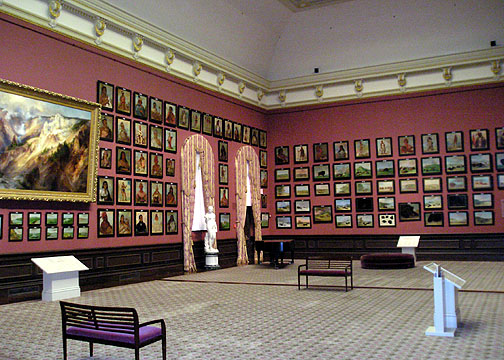
One of the less visited gems of the Smithsonian Institution here in Washington is an antebellum red brick building with a black mansard roof just across Pennsylvania Avenue from the White House.
Named after the famous architect who designed it (he also created the Smithsonian "Castle" in D.C. and St. Patrick's Cathedral in New York), the building originally housed the art collection of William Wilson Corcoran and was the first major building in the U.S. to be built in the Second Empire style. After the large Corcoran Gallery museum was built a block south and the collection moved in 1897, the federal government acquired the building and used it for the U.S. Court of Claims until 1964. After a lengthy restoration, it opened in 1972 as the Renwick Gallery.
The Renwick is used today as one of the buildings for the Smithsonian's National Museum of American Art, displaying permanent and traveling exhibitions of American crafts and decorative arts. The main collection on indefinite temporary display right now is the Catlin Collection.
George Catlin was an early 19th century American lawyer who visited Indian tribes west of the Mississippi all across the Great Plains and painted hundreds of portraits of Indians. Anthropologists today consider them to be an authentic record of period tribal clothing and adornment styles during the early 1830s, when tribal contact with Euroamerican culture had still been fairly minimal.
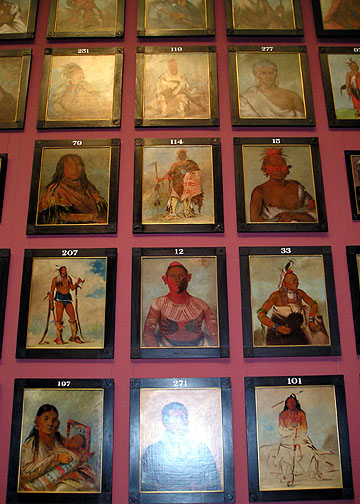
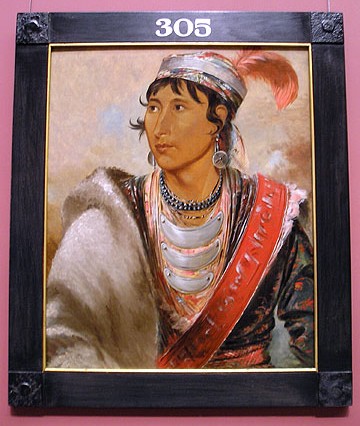
Catlin took his paintings on tour in Europe to great public acclaim, and the Renwick's display is designed to resemble the way Catlin showed the paintings in Europe.
The visual impact of hundreds of Indian portraits on the rose-colored walls in the Grand Salon is stunning. Many of these paintings are quite well-known from art books and Indian histories, while others have seldom been seen.
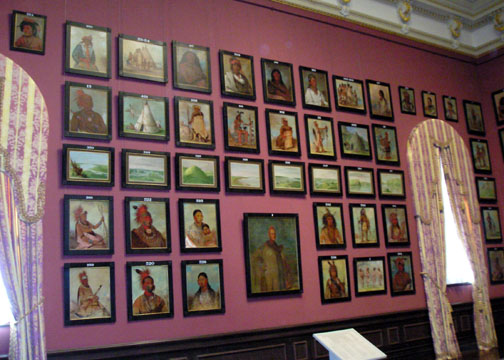
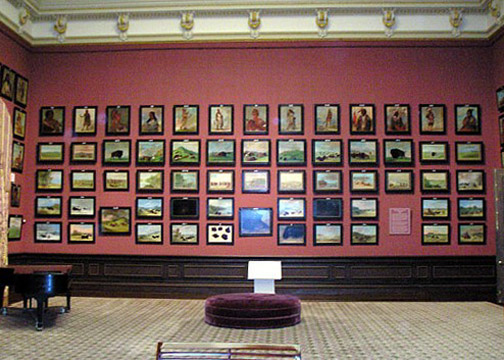
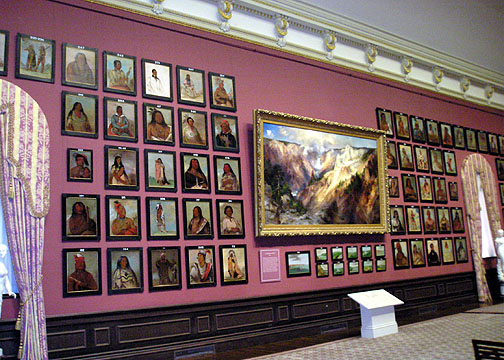
Not everything in the Renwick is Indians (after all, the Smithsonian does have a whole museum down by the Capitol devoted exclusively to Indians). The temporary galleries downstairs were devoted to a huge retrospective of American silver ware from the traditional to the very contemporary called "Modernism in American Silver." Not just forks and spoons, the exhibit showed unusual tea services, bowls, table and barware, and candelabra from fine private homes, grand hotels, and even Navy battleships. We just barely caught the silver on the last weekend of its exhibition here, and now it has moved to the Dallas Museum of Art.
There's a bit of whimsy in the Renwick's side galleries upstairs, as well, where the permanent collection includes Larry Fuente's "Game Fish," a sailfish made of popular American game pieces such as dominoes, ping-pong balls, dice, poker chips, and Scrabble tiles.
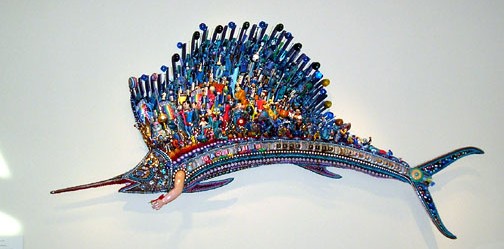

No comments:
Post a Comment